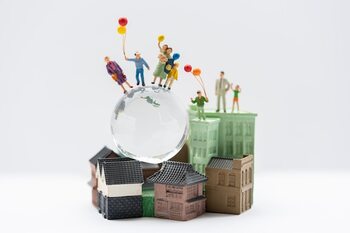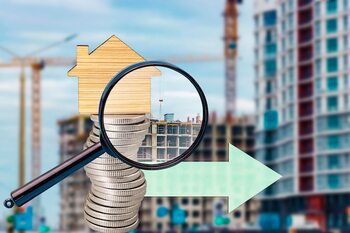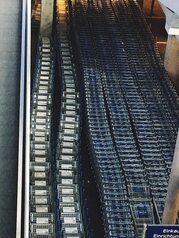The role of cultural diversity in real estate appreciation

Cultural diversity not only enriches our communities but also plays a crucial role in real estate appreciation. In a world where location is key to property value, understanding how cultural interactions influence the perception and demand for spaces can make the difference between a successful investment and a missed opportunity. In this article, we will explore how the fusion of cultures transforms neighborhoods and increases real estate appeal, turning diversity into a valuable asset.
The connection between cultural diversity and urban development.
The relationship between cultural diversity and urban development is a dynamic that manifests in multiple aspects of community life. When a neighborhood is characterized by its cultural plurality, this environment fosters the creation of vibrant spaces where traditions, gastronomy, art, and festivities intertwine. These types of interactions not only enrich the daily experiences of residents but also attract visitors and potential buyers looking for a dynamic and diverse lifestyle. Cities that promote this diversity tend to be perceived as more attractive, which increases interest in properties located in these areas.
Additionally, urban development that integrates diverse cultures can translate into greater public and private investment. Local governments often recognize the economic value of promoting multicultural neighborhoods by driving initiatives that improve infrastructure and services. This not only benefits current residents but also elevates the area's profile to real estate investors. Real estate appreciation is thus fueled by an environment where different cultural expressions coexist, generating a positive cycle: as property values increase, cultural diversity is further encouraged by attracting new inhabitants willing to contribute to this collective wealth.
2. How multiculturalism drives interest in certain locations
Multiculturalism enriches cities by transforming their identity and offering a variety of experiences that attract both residents and investors. Areas where different cultures coexist often have a more diverse gastronomic, artistic, and recreational offering, which not only improves the quality of life for their inhabitants but also makes those places desirable destinations for new buyers. This cultural mix can result in festivals, markets, and community events that celebrate the traditions of various nationalities, creating a vibrant atmosphere that elevates interest in living in those areas. As people seek more inclusive and dynamic environments, the demand for properties in these locations tends to increase.
Moreover, cultural diversity can directly influence urban development and infrastructure planning. Local governments often invest in multicultural-rich areas to promote economic growth and attract tourism. As a result, improvements are made in public transportation, green spaces, and urban facilities that benefit the entire community. These investments not only elevate the quality of available services but also increase real estate value by making those locations more attractive to potential buyers and renters. The combination of a unique cultural identity with a well-developed urban environment creates an ideal scenario for increasing real estate appreciation.
3. Success stories: neighborhoods that thrived due to their diversity
The transformation of neighborhoods through cultural diversity can be observed in various cities around the world. A notable example is the neighborhood of Williamsburg in New York, which has undergone significant real estate growth due to its mix of cultures. Originally an industrial area, the arrival of artists and creatives from different cultural backgrounds not only revitalized the area but also attracted new residents interested in its vibrant and diverse environment. This cultural fusion has led to the establishment of restaurants, galleries, and community spaces that celebrate this plurality, thereby increasing the neighborhood's appeal to investors and buyers alike.
Another successful case is found in the Shoreditch district in London, where ethnic diversity has been a key driver for real estate revaluation. In this neighborhood, an increase in migrants and international entrepreneurs has led to a varied offering of shops and services that reflect multiple culinary and artistic traditions. As a result, Shoreditch has not only become a popular destination among young professionals and tourists, but it has also seen its properties significantly increase in value. The creation of an inclusive environment where different cultures coexist and collaborate is what makes these places highly desirable for both living and investing.
4. The impact of cultural events on property values
The impact of cultural events on property values is a phenomenon that has gained relevance in recent years. Festivals, art fairs, and food exhibitions not only celebrate diversity but also attract visitors and potential buyers to a neighborhood. These activities generate a sense of community and belonging, increasing the interest in living in certain areas. When properties are located in places where cultural events are frequently held, their appeal rises, as new owners not only acquire a home but also a vibrant lifestyle that values multiculturalism.
Additionally, the presence of these cultural manifestations can transform the perception of the neighborhood. Spaces previously considered less desirable can be revitalized by becoming venues for artistic and cultural activities. This not only improves the image of the place but also boosts local commercial development, which contributes to greater real estate demand. By increasing the flow of people to an area due to these events, a favorable economic dynamic is created that benefits both residents and investors. In this context, cultural events act as catalysts for the growth of property values, reflecting how cultural wealth can be a tangible asset in the real estate market.
5. Strategies to promote diversity in real estate projects
To promote diversity in real estate projects, it is essential to implement strategies that encourage inclusion and respect for the various cultures present in a community. One of the keys is to involve local residents in the planning process, allowing them to express their needs and desires. This not only helps create spaces that truly reflect the cultural identity of the neighborhood but also strengthens the sense of belonging among its inhabitants. Community workshops and participatory design sessions can be effective tools for gathering ideas and building a project that celebrates diversity.
Another effective strategy is to develop multifunctional spaces that serve as meeting points for different cultural groups. The creation of common areas, such as plazas, markets, or community centers, can facilitate interactions between various communities and foster an environment of harmonious coexistence. Additionally, integrating architectural and decorative elements inspired by diverse cultural traditions can visually enrich the urban environment and attract a broader clientele. By doing so, spaces are transformed not just into physical places, but into platforms where differences are celebrated and a sense of unity within cultural diversity is promoted.
6. The importance of local art and culture in added value
The relationship between art and local culture with real estate appreciation is a phenomenon that has manifested in various cities around the world. Communities that promote and celebrate their cultural heritage tend to attract more visitors, which can result in increased demand for properties in those areas. Spaces like art galleries, theaters, and cultural festivals not only enrich the living experience of residents but also create a sense of identity and belonging. This cultural dynamism fosters greater investment in infrastructure and services, which directly contributes to the increase in real estate value.
Moreover, art and culture act as catalysts for local economic development. The presence of artists and creators in a community can foster an innovative environment that attracts entrepreneurs and creative businesses. This generates new job opportunities and improves the economic conditions of the neighborhood, thereby increasing its appeal to potential buyers and investors. Properties located in culturally vibrant areas tend to have a higher appreciation rate due to this multiplier effect, positioning cultural diversity as a key factor in real estate market valuation.
7. Market analysis: where are the opportunities?
The analysis of the real estate market reveals that the most promising opportunities often arise in areas where cultural diversity is present. Neighborhoods that host a rich mix of cultures tend to attract a broader audience, which translates into greater demand for residential and commercial properties. This dynamic not only increases the value of existing properties but also drives the development of new projects and services tailored to the needs of different communities. By researching these areas, investors can identify emerging trends and anticipate where future investment will be concentrated.
Additionally, cultural diversity can influence the creation of unique and attractive spaces that promote tourism and community life. Areas with a strong cultural representation tend to develop events, festivals, and activities that celebrate this richness, attracting both residents and visitors. This generates a positive cycle: as interest in these places increases, not only does real estate value rise, but also the quality of life for its inhabitants. Thus, investors should pay attention to how these cultural interactions can be catalysts for economic growth in specific local markets.
8. Sustainable future: how cultural diversity can guide responsible investments
The sustainable future of real estate investments is intrinsically linked to cultural diversity. As communities become more diverse, so do their values, needs, and aspirations. This plurality not only fosters a sense of belonging but also drives the development of urban spaces that reflect a variety of identities. Investing in areas where cultural diversity flourishes can result in innovative projects that attract a broader and more diverse clientele, as well as a sustained increase in property values. By prioritizing this inclusive approach, developers can capitalize on emerging trends and proactively respond to social expectations.
Moreover, cultural diversity promotes sustainable practices within the real estate sector. Communities with a rich blend of traditions often adopt collaborative approaches to address local issues, resulting in more efficient and environmentally friendly development strategies. The combination of ideas and cultural influences can lead to unique architectural projects and innovative solutions that minimize environmental impact while maximizing the functionality and aesthetics of spaces. Thus, by integrating cultural diversity into their investment strategies, market players are not only fostering a vibrant and attractive urban environment but also ensuring a positive legacy for future generations.



